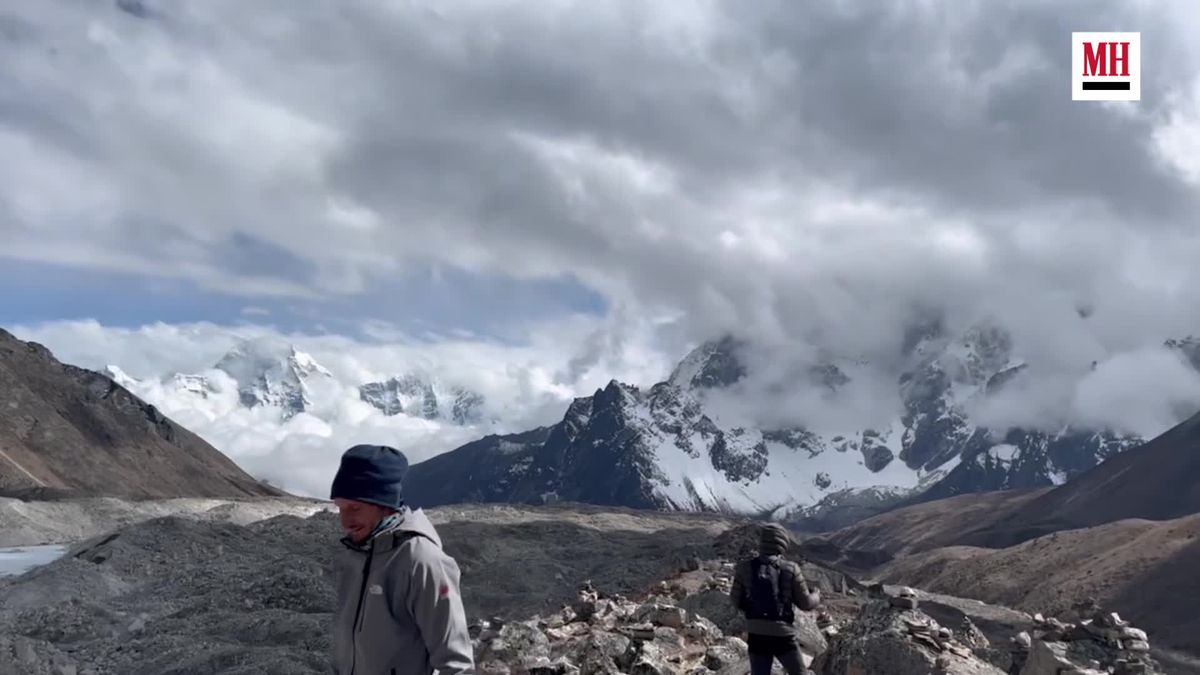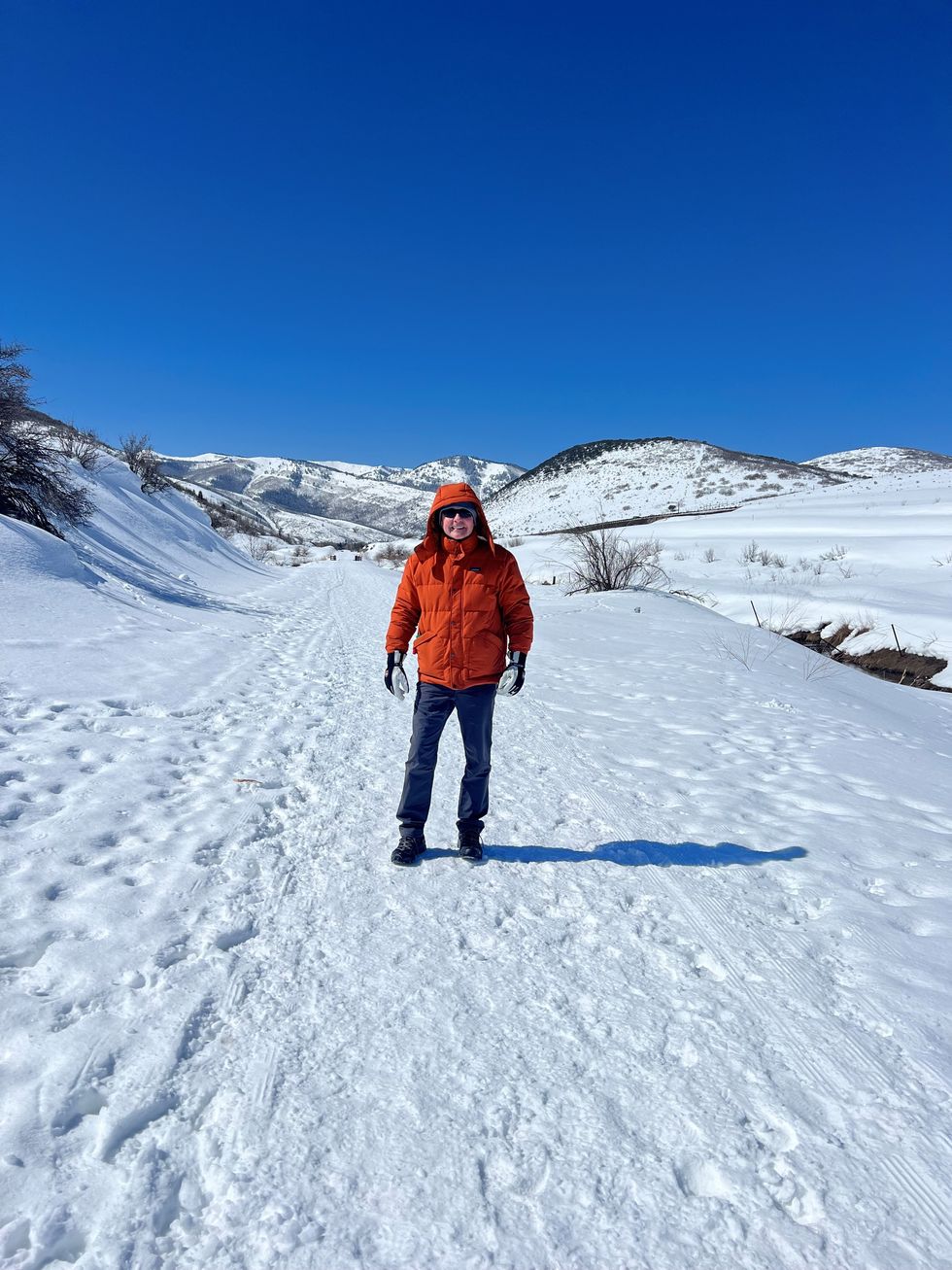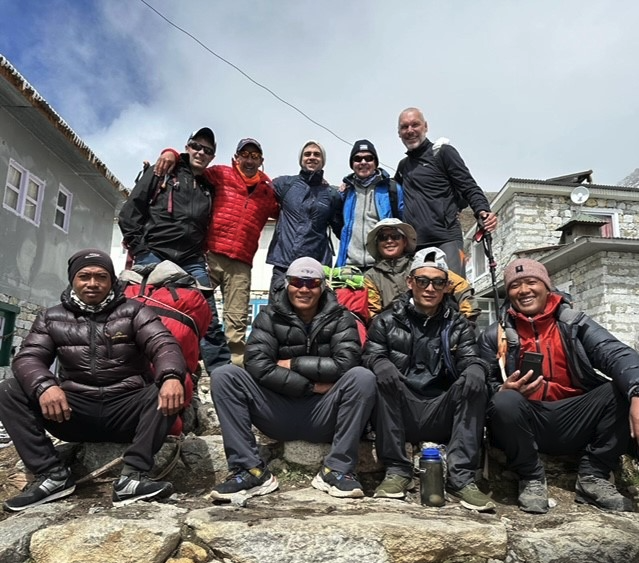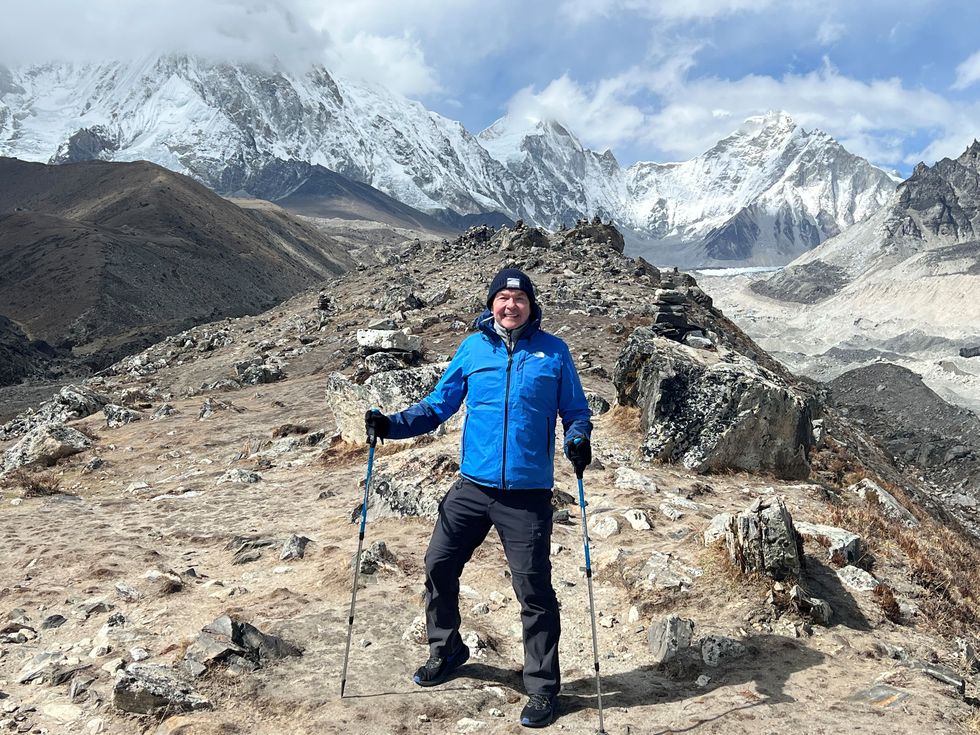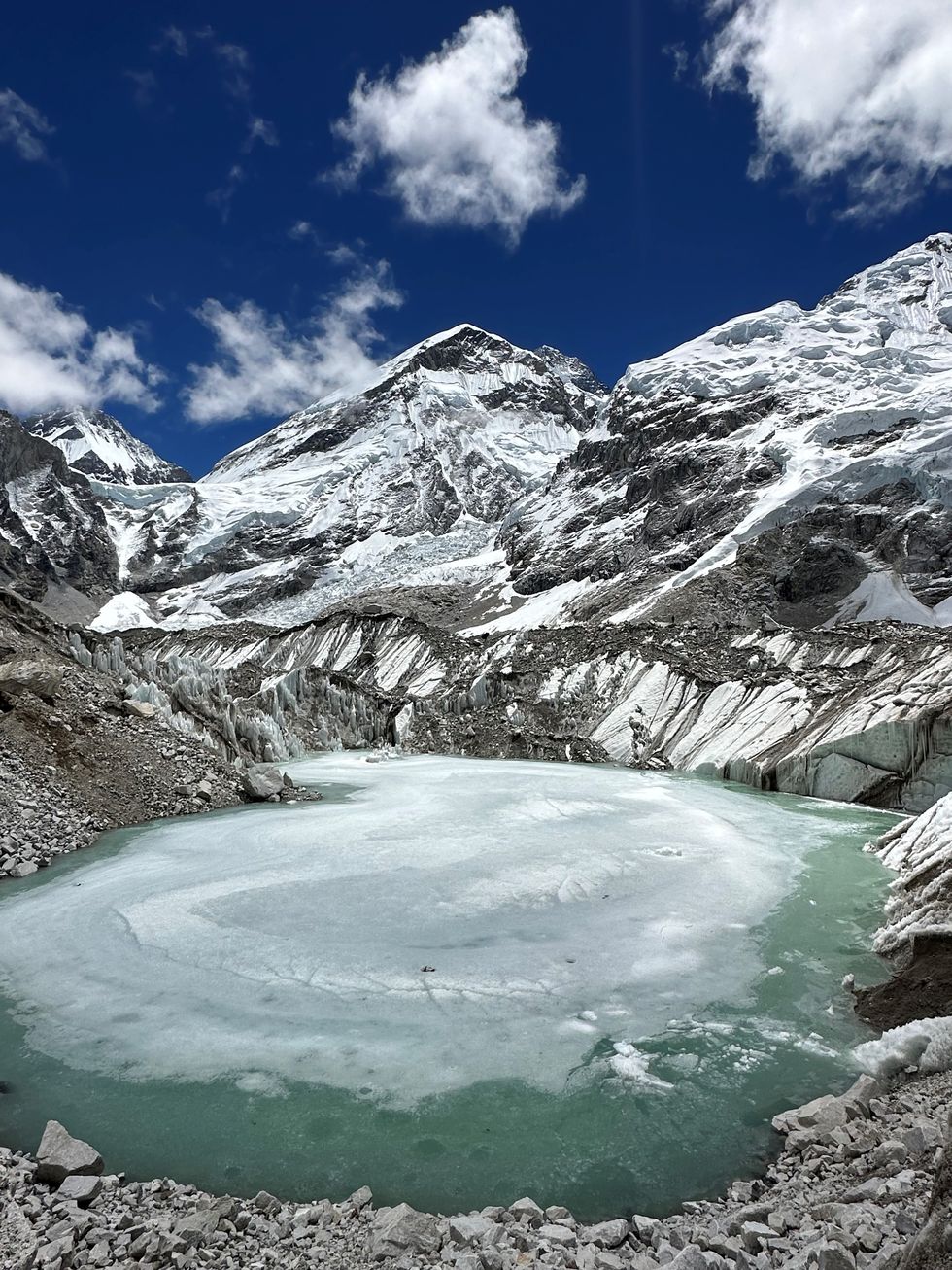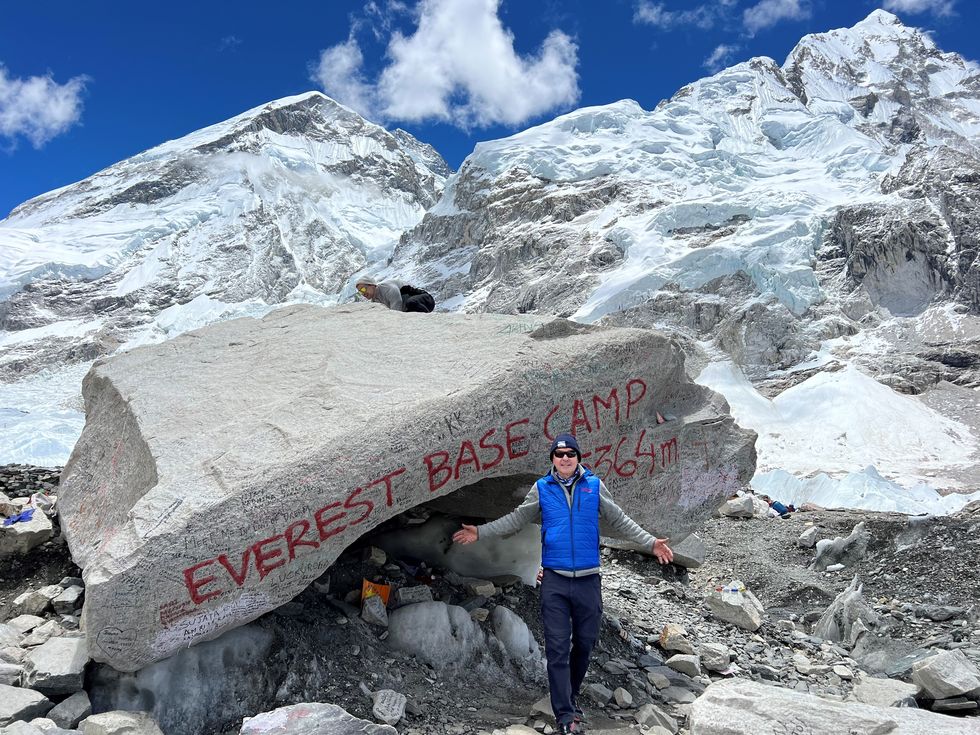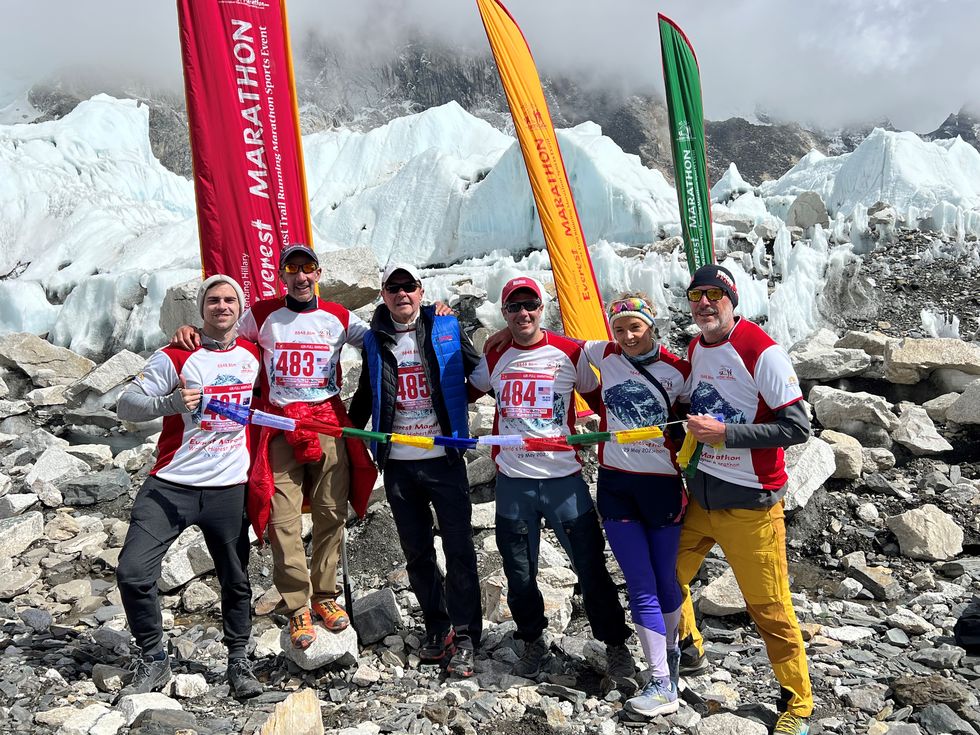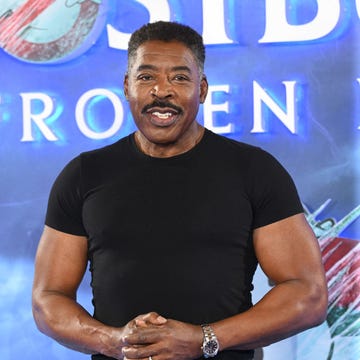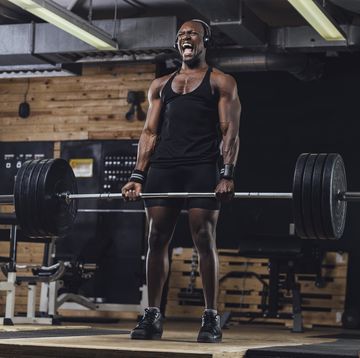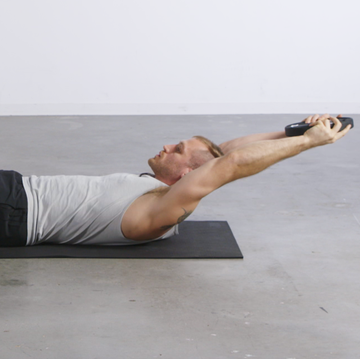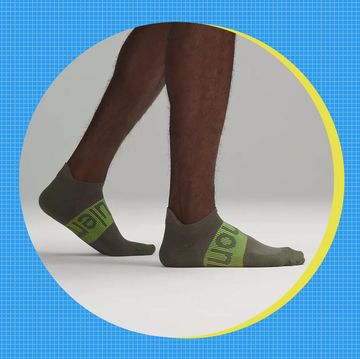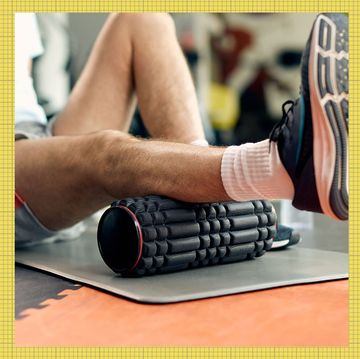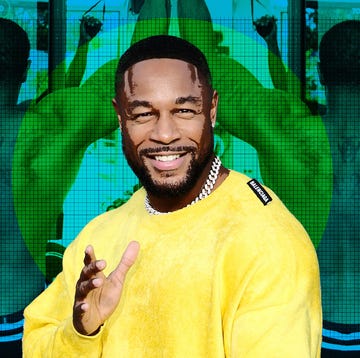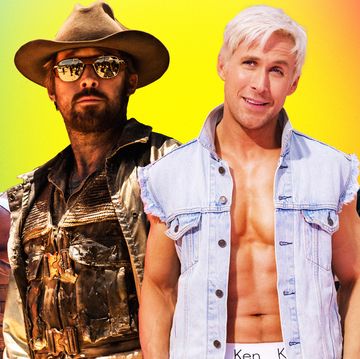IT IS 3 A.M. and I am in a two-man tent at Everest Base Camp at 17,500 feet. I’ve been awake for three hours, having some trouble breathing, feeling a cold coming on, dealing with a possible broken finger, and listening to avalanches in the distance. After nine grueling days of hiking to get here, I am wondering if I will have the energy to get out of my sleeping bag at 6 a.m. to prepare for the Tenzing Hillary Everest Marathon, the world’s highest trail running event and ranked as one of the most difficult runs on the planet.
In my lifelong commitment to fitness, health and well-being, I’ve been a devoted runner. hiker, skier, gym-goer, and more. I’ve also believed in celebrating my big birthdays with a special experience. At 40, I gathered a group of friends to climb Mt. Kilimanjaro. At 50, I went to Antarctica to visit my seventh continent, and at 60, I returned to Antarctica to run a marathon, completing seven marathons on seven continents. In the intervening years, I hiked in Bhutan and Patagonia, as well as trekked in Madagascar and Tasmania. As I approached 70, I was ready for something that would satisfy my desire for the next big adventure.
When I learned that 2023 was the 70th anniversary of the first successful climb of Mt. Everest with Sir Edmund Hillary and Tenzing Norgay, and that the Everest Marathon would commemorate the event exactly three months to the day prior to my actual birthday, the Universe told me that this was my destiny for what might be the epic challenge of my life.
It turned out to be true.
I made the commitment to pursue the event seven months before it would happen, starting a new training regimen to get ready. My trainer Joao Monteiro created a weekly one-hour program to strengthen my quads, hamstrings, and glutes. Added to that was twice-weekly weight training interspersed with runs that became longer as I reached the 16-week training period that I had used for past marathons. Multiple 17-mile runs, culminating in some 20-milers gave me the confidence that I needed. Little did I know at the time that my training approach wouldn’t serve me very well on the mountain.
Since I live at sea level in New York, I also knew that I would need some higher altitude training. Within four months of leaving for Nepal, I headed to Santa Fe for some trail runs at 7,500 feet, and to Park City, Utah, for some hikes and runs at 7,000 feet. A trip to Argentina also gave me the opportunity to do some hiking at nearly 9,000 feet in the foothills of the Andes. While I hoped that this would give me a good base for my training, this too would not really prepare me for what was ahead.
I was fortunate that I had no injuries during my training. It was all about consistency and discipline to get myself ready. Physically, I was feeling good, but mentally, I started to think about the risks, and my anxiety levels grew. There was the helicoptering that we would be doing (Nepal doesn’t have the best safety record), the issue of altitude, the sheer cliffs that we would have to maneuver, and the possibilities of sudden snowstorms, avalanches, getting lost on the marathon course, and evacuation due to a fall or sudden edema.
When I talked to my friend Lara Kruiskamp, who had done this trip, I learned that she and the other runners had to be evacuated from base camp due to a major snowstorm. That year, a runner had fallen and broken his jaw, and another runner had gotten in the way of a yak and went off a cliff. The 2015 earthquake led to fatalities at base camp, and others have died of heart attacks and strokes when they got there. Was I really ready for this adventure, I wondered? I had never been this apprehensive.
The Tenzig Hillary Everest Marathon was started 19 years ago by Bikram Pandey KAAJI , a Nepali tourism leader. For 2023, there would be 209 participants: 70 Nepalis and 139 foreigners from 27 different countries. The majority of the group would run a traditional marathon, while 20 or more would do a 70km extreme ultra, and a small group would run a half marathon.
I began to lobby some of my more adventurous friends to see who might join me. Ultimately, Keith LaScalea, 50 (my personal doctor), who has run over 70 marathons, signed up. Marty Gruber, 58, who was wrapping up his career as a private banker and was a marathoner, triathlete, and avid hiker, decided to join, too.
In mid-May, we arrived in Kathmandu, the exotic capital of Nepal. There, we met two of our fellow travelers to create our group of five: Gary Simmons, a 32 -year-old Brit and business analyst who lives in Sydney and happens to rank number one in Australia in Natural Body Building competition (and third in the world); and Marcel Kotrady, 49, a Ph.D. businessman from Bratislava, Slovakia, who had done eight Ironman competitions, swum the Bering Sea, and completed countless trail marathons. If these two were examples of the field, my reaction was, “I’m in way over my head!”
Marcel would become our “stat man,” informing us how much we hiked on any given day (up to six miles over rocky terrain), our increased elevation (we would hike from 9,383 feet to 17,500 feet), and how long it took us for each hike. He recorded those daily details in our WhatsApp chat group where we also shared photos with each other.
Our group took a 40-minute helicopter ride from Kathmandu to Lukla, a mountain town in Northeastern Nepal and the jumping-off point for people who are on their way to Everest. Known to have one of the most dangerous airports in the world (a runway that goes up a hill), we were happy to know that we would touch down on a helipad.
Lukla is where we met our Sherpa, Man Magar, and his assistant and nephew, Dipak, along with the three porters who would help to get our heavier gear from place to place. Man had been to base camp over 25 times, which gave us great confidence as we sat with him to map out our nine-day hike.
Man and Dipak would become family to us. Our brothers from another mother. Our guides and supporters. Man would help with Keith’s broken tooth, and my fall that resulted in a broken finger. Dipak would pull me to safety when a yak tried to nudge me off a cliff. They checked our oxygen intake daily and made sure that none of us were exhibiting the symptoms that could lead to a pulmonary or brain edema, which could be fatal. They kept our water bottles full and made sure that we ate every meal that was put in front of us. A typical dinner was spaghetti with French fries and either rice or boiled potatoes, while breakfast was porridge and toast. It was a heavy carb diet. Several of us were also taking a 3-day course of Diamox to help with potential altitude sickness, and they made sure we took our pills.
Prior to leaving the States, I had been very thorough about my gear and equipment. While it would be hot during the days, it would be cold at night, which required a set of layered clothing, including fleece, rain gear, and a warm winter coat. Smartwool long underwear went into my bag, as did waterproof hiking socks and a long list of other needs. But it was the stuff that could be easily forgotten that got my extra attention. Iodine pills, a sleeping bag liner, wet wipes, a hot water bottle, a pee bottle, and a headlamp were just a few of my must-haves that proved invaluable.
I had broken in a new pair of hiking boots from my local R.E.I., and I planned to do the run in my trusty Nike Pegasus running shoes, which I had worn in both Antarctica and Mongolia. But one day out of Lukla, I knew that I needed a new plan. There was no real time to break in a new pair of shoes, but I had no choice, as the terrain was too treacherous. There was also the revelation of what proved to be indispensable throughout my whole experience. The number one item that helped me navigate up and down the mountain for both the climb and the marathon? POLES.
When we set out from Lukla for Namche Bazaar, it quickly became apparent that this was going to be a hike like no other. A combination of 40 degree trails up (and down), suspension bridges over deep gorges (we crossed at least six of them in total), and rough-hewn steps built into the mountain (I stopped counting one group after 350) would be a harbinger of our next week. The overall hike would be approximately 31 miles, and the terrain would be more challenging than any of us imagined.
It was on that first hike that all my anxiety came back in a rush. Keith told me it was something called “Allostatic load,” a cumulative effect of wear and tear on the mind and body that environmental stressors create. Yup, I had the load and I couldn’t shake it.
After an overnight at the Sherpa village of Phakding, we set out on a six-mile undulating hike to the town of Namche Bazaar, a crossroad for trekkers, climbers, and adventurers. Right out of an Indiana Jones movie, it is filled with gear shops, restaurants, cafes, and hotels where everyone trades stories and offers advice. The marathon would actually end there, after which we would helicopter back to Kathmandu. At Namche, I bought a pair of trail runners, Salomon Labs, and decided to wear them from that day on. It turned out to be the perfect decision, as I maneuvered through rocks, snow, crevasses, and more. Those shoes and my trusty poles gave me a boost of confidence.
From there, our hike took us into Sagarmatha National Park (the Nepali name for Everest), through a stunning rhododendron and magnolia forest that opened up to majestic views.
Throughout our nine days, the scenery was breathtaking, beyond anything that any of us had ever seen. From pristine landscapes with sweeping snow-capped mountains, glacier lakes and deep unending valleys that stopped us in our tracks, we passed Buddhist temples and prayer wheels, stopping for a blessing for safe passage at the Tengboche Monastery.
At times, the trail itself could be less than four feet wide with sheer drop-off cliffs right next to us. It was heavily trafficked with porters, other trekkers, and packs of mules and herds of yaks that carried supplies and gear for the local communities along the way.
My new mantra was to be “hyper present” with each step I took, realizing that one misstep could lead to a disaster. It was on one of those narrow paths that Dipak grabbed me by the arm to prevent me from falling off a cliff when a yak decided I was in his way. A trip resulted in a broken finger and a bloody leg.
After a day of acclimatizing in Namche and arriving in the town of Deboche, I began to feel my anxiety levels come down. I was getting the lay of the land. A typical routine was a rigorous hike a half-mile uphill, then another half-mile downhill. Each night, we stopped at indoor guesthouses that had no heat, which meant we slept in our clothes in sleeping bags on the simple cots. We were charged for internet (available except at base camp itself) and hot showers, but had lots of free ginger tea with lemon and honey that became our staple drink. By day four, I had finally had a breakthrough in my mood, and was beginning to enjoy the trip, even though it got progressively more challenging as we moved on to Pangboche, Dingboche, Thukla, Lobuche, and finally Gorakshep. Even an unexpected snowstorm in Lobuche didn’t dampen my mood.
Everyone who treks to base camp stays overnight at Gorakshep, a very spartan and grim outpost. Most trekkers take the three-hour hike to base camp and return right away to begin the hike back down. Our plan was to spend the night there and start the marathon the following morning.
It was a glorious morning when we set out, arriving at the famous Everest base camp rock, which when reached has become known as an accomplishment unto itself. The camp looked like a moonscape with tents pitched between rocky ravines and glacier shale that can be slippery and dangerous. There were overflowing toilet tents and cold dining tents and safe to say no creature comforts of any sorts.
As we arrived, runners and organizers were scurrying to put their plans in place for the run. However, there were already people who were being evacuated, including an elite Nepali runner, a woman from Australia, and a 50-something-year-old who was suffering from the wet cough that can lead to serious issues. In total, eight rescues took place at camp and on the course, and fortunately, everyone was fine. Man and Dipak checked all of our breathing and vitals to make sure that we were all handling the altitude okay, and I went to the medical tent to have a splint put on my finger.
After a quick meal and welcoming ceremony, most of us retreated to our tents to what would become the most miserable night of my life. Aside from not being able to sleep, I now had a cough, breathing was difficult, and I had developed mountain sickness that led to confusion and disorientation. So much for my quaint 7,000-feet training runs. My new mantra became one, two, breathe, one, two, breathe. I battled to find some mental and physical equilibrium, as I listened to more avalanches in the distance. My mind was playing tricks on me when I couldn’t remember where I was. Mantra.
Around 3:30, I asked my tent mate Keith if he was awake, and sure enough, he had been suffering through the night, too. The idea of running a marathon in a few hours was the last thing that both of us really wanted to do, especially since we didn’t sleep the rest of the night. At 6 a.m., we managed to crawl out of our sleeping bags and tent to get dressed and greet Marty, Marcel, and Gary, who commiserated with us over their own restless night.
We began the 26.2 mile journey down the mountain, but within minutes we were confronted with a herd of yaks that blocked our way. Very quickly, we also learned that none of us could actually run for the first few miles due to the treacherous terrain and altitude. My trusty poles helped me navigate the rocks, as I tried to find some rhythm and pace, but it was challenging. I was tired and now had a full-blown cold. My misery from the night before continued, but as most marathoners know, a race is a head game, so I needed to talk myself into a new attitude.
The good news is the course was perfectly well-marked with tiny red flags. There were ample water and food stations, as well as people who noted our bib numbers and time as we reached various checkpoints. The bad news is that there was only 20-30% of what most runners would call “runnable terrain.” As a result, it was more of a hike, climb, and power walk with some intermittent running. I was convinced that all of my training runs didn’t really help, although Marcel convinced me later that it helped with my stamina on the course.
Ultimately, I decided that I would focus on being safe and move at a pace that allowed me to finish with no injuries. Marty and I decided to stay together the whole course, stopping along the way for a water refuel or to eat something to give us a boost of energy.
We would move from 17,500 feet to the finish at 11,286 feet. We gained more oxygen capacity as we moved down the mountain, at times taking on steep downhills that lasted for 45 minutes or more, and uphills that were equally as long. With the exception of my tensor fasciae latae (TFL) muscle tightening up and the nagging cold, the rest of my body felt okay. My mood got lighter as I took in the beautiful scenery and the perfect weather. I was shedding my angst from the night before.
My usual marathon time is around 4 hours 15 minutes, but for this one, I crossed the finish line at 12 hours and 30 minutes, side by side with Marty. Most of the non-Nepali runners came in more than twice their usual marathon times or more, as well. We all acknowledged that this was something other than what we knew as a long-distance run.
Throughout the trip, I had experienced anxiety, uncertainty, altitude issues, and bouts of exhaustion, but I had managed through them, often times with the help of our tight group that had bonded and supported each other. By the time I crossed the finish line in Namche, I felt strong and accomplished. At nearly 70, I had proven to myself that I was still able to take on physical challenges beyond my own expectations.
That night, as we met up with some of the other runners, everyone began to confess how they had been filled with anxiety and trepidation at base camp and along the course.
“This was more than a marathon," Keith said. "It was an all-out endurance event that required a lot of grit."
We all agreed that we had gone through a shared experience that we would never forget. The next morning, we hiked to the helipad above Namche. As our helicopter headed down the valley, we all looked at each other and gave a thumbs up. Each of us had struggled at times, but we had done it. I reflected that indeed it had been the adventure of my life, but only so far—because I was already thinking about what I might do next for my 71st birthday.

